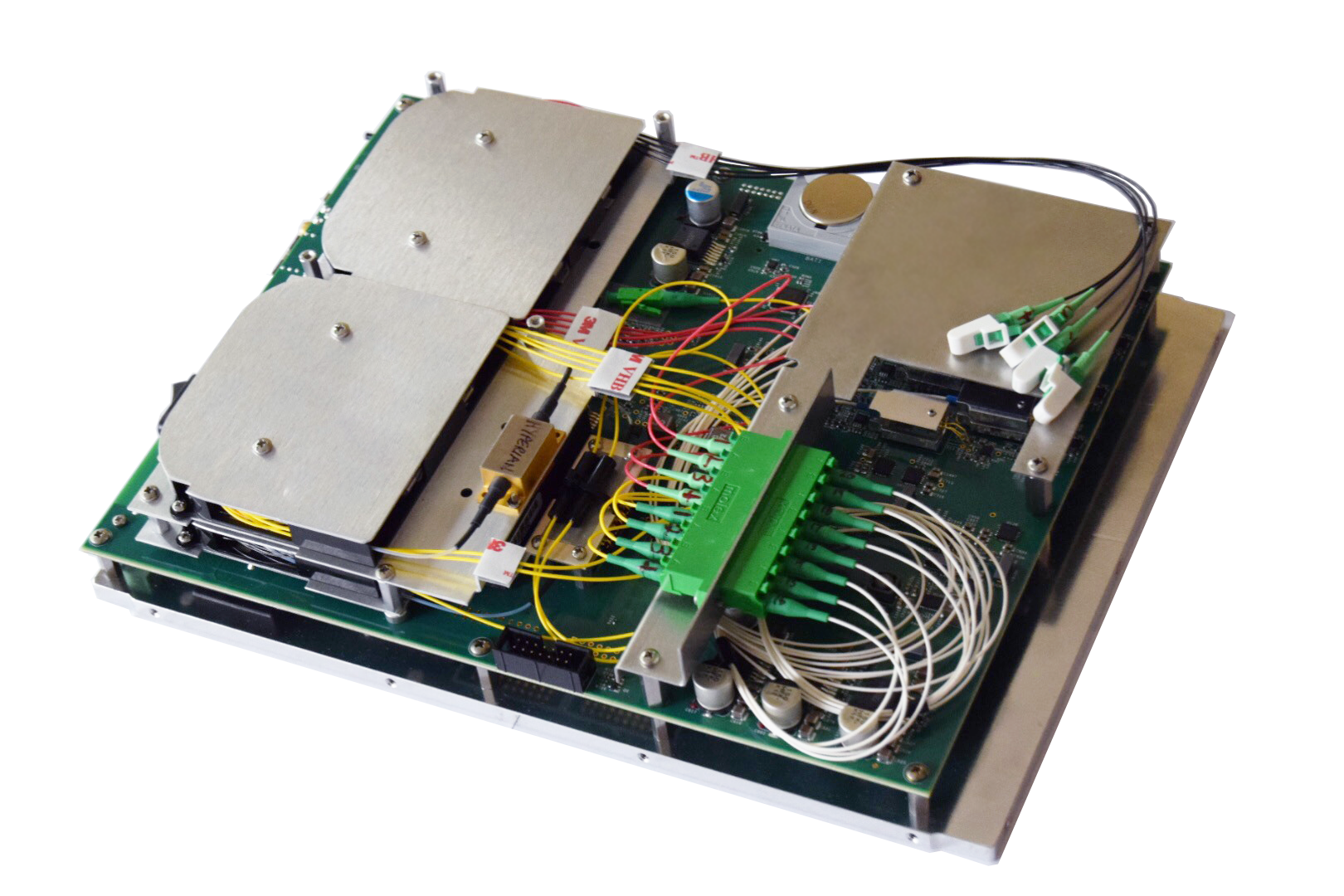Product information "HYPERION Single Board Fiber Optic Sensing Interrogator"
1-4 Channels; Dynamic Range 17-45 dB; Sampling Rate 10-5,000 Hz; Wavelength Range 60-160 nm; Wavelength Accuracy 1 pm; Wavelength Stability 1 pm; Optical Fiber Connectors LC/APC
Luna’s HYPERION Single Board Interrogator is a high-performance optical sensing instrument that offers unmatched ease of integration for OEM systems. A full suite of software tools typically only available to high end instruments is among one of the many features of the HYPERION Single Board Interrogator.
Derived from Luna’s HYPERION si155 platform, the HYPERION Single Board Interrogator leverages the unmatched gains which are realized with Luna’s patented fiber Fabry-Perot filter and wavelength reference technology.
The HYPERION Single Board Interrogator features groundbreaking capabilities including high-performance DSP and real-time FPGA processing on-board, which enables rapid, flexible peak detect algorithms of Fiber Bragg Gratings (FBG), Long Period Gratings, Fabry-Perot (FP), Mach-Zehnder (MZ) sensors, and others with low-latency access to data for closed-loop feedback applications.
HYPERION static full-spectrum optical interrogators measure the full optical spectrum of the optical sensor signals and can be equipped with a NIST absolute reference cell. The performance of the static interrogator module is characterized by high dynamic range and high absolute wavelength accuracy.
The HYPERION Single Board Interrogator is compatible with the ENLIGHT sensing analysis software, which provides a single suite of tools for data acquisition, computation and analysis of optical sensor networks. More information on the ENLIGHT software can be found in the downloadable datasheet. This interrogator also includes a comprehensive application programing interface (API) and examples written in LabVIEW, Python, Matlab, C++ and C#.
Whether an application requires static or dynamic real-time acquisition or periodic monitoring, Luna offers the right instrument for the job. Proven to be an essential element in reliable, long-term sensing measurement installations, Luna’s sensing instruments have been installed in hundreds of challenging applications all over the world, including large-span bridges in China, earthquake monitors in California, oil platforms in Brunei and marine vessels in the North Sea.
Key Features:
- Truly Turn-key Solution Providing Quick Start-up and Data Collection With Minimal Software or Electronic Design Required for System Implementation With Added Benefit of Reduced Cost
- Dynamic Measurements of Fiber Bragg Gratings (FBGs), Long Period FBGs (LPGs), Fabry-Perot (FP) and Mach-Zehnder (MZ) Optical Sensors From Detailed Optical Spectrum
- Data Verification Key Guarantees only Valid Output. Each Data Set is Calibrated and Verified Against an Available Permanent NIST Traceable Reference
- Feature-rich ENLIGHT Software and API Support, Available at No Cost for Sensor Conditioning, Data Visualization and Data Saving Definitions
- Deep, Continuous Dynamic Range of 17 to 45 dB is Available to Each Sensor on Each Channel, Independent of Differential System Losses
- Modes: Enhanced Visibility (10 Hz), Standard (100 or 1,000 Hz), High Speed (5,000 Hz)
- Number of Parallel Channels: 1 to 4
- Wavelength Range: 60 to 160 nm
- Wavelength Accuracy / Stability: 1 pm
- Optical Fiber Connectors: LC/APC
- Proven Reliability and Longevity of the Luna Swept Wavelength Source, With Over 100 Million Hours Logged Since 2000
- Dimensions: 203 x 273 x 53.5 mm
Applications: Fiber Optic Sensing of – Oil & Gas; Medical Devices; Industrial Measurements; Energy; Structures; Security; Aerospace



